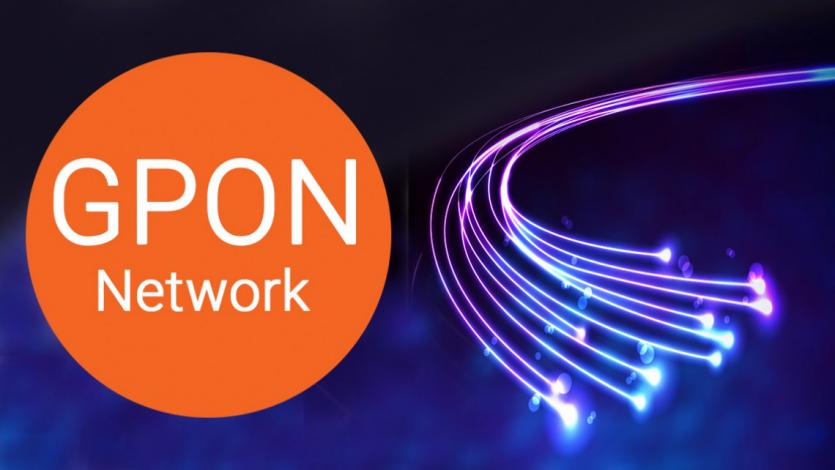What Is Fiber Optic Telecommunication & FTTx (Fiber to the X)
These Days, there is a lot of talk about fiber optics and fiber optic telecommunications. This powerful Technology Provides Users With Very High Bandwidth And Significantly Reduces The Speed Of Downloading And Uploading Files.
Because of its many advantages, fiber optics is used by many companies and users to overcome the limitations of other methods. However, the above technology also has limitations.
In this article, we will briefly introduce you to the two essential terms in fiber-optic telecommunications: FTTX.
What is fiber optic communication?

Fiber-optic telecommunications transmit information from one place to another by sending light pulses through an optical fiber. Light is an electromagnetic carrier wave that is modulated to carry information.
The development of optical fiber communication systems in the 70s revolutionized the communication industry and played a significant role in the emergence of the information age.
Due to the advantages of optical fiber communication over electrical infrastructure-based information transmission systems (such as twisted pair wires and coaxial cables), optical fibers have largely replaced copper wires in the core of networks worldwide. Many telecommunications companies use optical fiber to transmit telephone, Internet, and cable TV signals.
Researchers at Bell Labs using fiber-optic communication have achieved internet speeds of over 100 petabits per second per kilometer.
The communication process using optical fiber involves the following basic steps:
Generating optical signals by a transmitter, relaying the signal along the fiber (the process of repeating and amplifying the signal is called relaying), ensuring the signal is not too distorted or weakened, receiving the optical signal, and converting it into an electrical signal.
Many telecommunications companies use optical fiber to transmit telephone, Internet, and cable TV signals. Due to the lower rate of attenuation (loss of signs) and interference (caused by noise in the environment), optical fiber has many advantages over copper wire over long distances (communication between cities, provinces, a country with other countries, and intercontinental communication) or high demand for access to information (such as the Internet, which requires very high bandwidth with the lowest level of error in transmitted and received signals).
However, developing infrastructure between cities was relatively difficult and time-consuming, and fiber-optic systems were complex and expensive to install and operate.
Due to these problems, the optical fiber communication system was primarily installed and launched in long-distance projects. They could use this platform’s maximum information transmission capacity—this work compensated for the increased costs.
Since 2000, the price of optical fiber communication equipment has decreased significantly.
The cost of installing and connecting optical fiber to homes is more affordable than that of copper cables for telecommunications, Internet, and television.
Due to these problems, the optical fiber communication system was primarily installed and launched in projects that were far away. Because they could use this platform’s maximum information transmission capacity, this work compensated for the increased costs. Since 2000, the price of optical fiber communication equipment has decreased significantly.
The cost of installing and connecting optical fiber to homes is more affordable than that of copper cables for telecommunications, Internet, and television.
Due to these problems, the optical fiber communication system was primarily installed and launched in projects that were far away. Because they could use this platform’s maximum information transmission capacity, this work compensated for the increased costs. Since 2000, the price of optical fiber communication equipment has decreased significantly.
Active optical network
AONs use active (electrical) network equipment, such as switches or routers, to distribute signals. Incoming calls do not interfere because the equipment provides buffering for traffic. Usually, signs require optical-electrical-optical conversion.
Active Ethernet is a common AON that uses Ethernet optical switches for signal distribution and places the customer site and the central office in one extensive Ethernet system.
These networks are similar to Ethernet networks used in businesses and educational settings. However, they are intended to connect homes and buildings to a central office rather than connecting computers and printers in one location. Each switch cabinet can handle up to 1000 clients, but 400-500 clients are more typical.
What is GPON?

Point-to-Multi point (GPON) technology is one of the PON technologies called Passive optical network, which uses a fast information access mechanism based on the essential feature of using passive splitters in fiber optic distribution networks.
Takes. In this fiber optic access network, only one fiber is received from the provider’s hub and sent to multiple consumers, such as small businesses or home users. In Japan, the download speed equals 2.488 Gbit/s, and the upload speed is similar to 1.244 Gbit/s.
The above technology sends download signals to subscribers in broadcast and encrypted form. Point-to-multipoint networks consist of two main parts: an Optical Line Terminal with the capacity to serve at least 1000 network subscribers and an Optical Network Terminal unit installed in offices or homes.
It seems that the future is moving towards using PON because its maintenance cost is low and stability is high; the signal attenuation problem is less than in similar examples, and it offers the ability to increase network access bandwidth.
What is FTTx?
FTTX (Fiber to the x) is a general term for any broadband network structure that uses optical fiber to provide all or part of the connection required in last-mile telecommunications.
Due to the greater capacity of optical cables in carrying data than copper cables, especially over longer distances, copper telephone networks are being replaced by fiber. FTTX is a general term for all fiber-based configurations, which are divided into two groups:
FTTP/FTTH/FTTB and FTTC/N. There are many different types of FTTX configurations in the telecommunications industry.
There are various terms related to FTTX, the most important of which are the following:
- FTTP (Fiber to the Customer Premises): This term is used as a general term to refer to FTTH and FTTB, as well as when the fiber network includes homes and small businesses.
- FTTH (Fiber to the Home): Fiber is carried out to the edge of the residence, such as a box outside the wall of a house. Passive optical networks (GPON) and point-to-point Ethernet are examples of FTTH that provide triple services (data, voice, and video) directly from the operator’s headquarters.
- FTTB (Fiber to the Building, Business, or Basement ): Fiber is laid up to the boundary of the building (such as the basement of a residential building), and the final connection to each residential unit is made using other methods.
- FTTD (Fiber to Desktop ): A fiber connection is established from the central computer room to a terminal or fiber converter near the user’s desk.
- FTTO (Fiber to Office): A fiber connection is established from the central computer room/main switch to a particular small switch (FTTO) at the user’s workplace. This small switch provides Ethernet services using a standard network cable. The buttons are distributed and decentralized throughout the building, but all are controlled from a central point.
- FTTE/FTTZ (Fiber-to-Tea or Fiber-to-Territory): A traditional cabling commonly used in commercial local area networks. In this technology, fiber connects the central computer room to a telecommunication box or cafe near the user’s workplace or desk. Despite the similarities in names, FTTE and FTTZ are not part of FTTX technology.
- FTTF (Fiber to the Yard) is very similar to FTT, with the difference that in FTTF, each fiber-connected device is considered to serve a single subscriber, allowing multi-gigabit speeds.
- FTTdp (Fiber to Distribution Point) is very similar to FTTC / FTTN, where the fiber is brought closer to the distribution box or distribution point to the customer, allowing for near-gigabit speeds.
- FTTN / FTTLA (Fiber to the Node, Neighborhood, or Last Amplifier): Fiber runs only to a street cabinet, which may be miles from the customer’s location. The final connection is via telephone wire. FTTN is usually a temporary step towards full FTTH and provides advanced telecommunication triple services.
- FTTC / FTTK (Fiber to Cabinet or Telecommunication Box): Similar to FTTN, the street cabinet or mast is closer to the customer’s location (about 300 meters) and within the scope of providing copper broadband technologies, such as Ethernet or Wi-Fi. This technology is sometimes referred to as FTTP (Fiber to the Tower), which may cause it to be confused with the fiber to the customer’s location system.
Fiber optic cables can transfer data at high speed over long distances, unlike traditional telephone lines and ADSL. For example, a typical gigabit Ethernet (1Gb/s) that uses cost-effective cat-5 and cat-6 cables can only cover 100 meters, while fiber-based Ethernet can easily cover tens of kilometers.
As a result, all major telecommunication providers worldwide use FTTP for direct transmission to the customer using symmetric 1Gbit/s long-distance connections. FTTP configurations that run fiber directly to the customer premises have the highest speeds, as the remaining parts can use a coaxial cable or Ethernet. Google Fiber has a speed equivalent to 1Gibt/s.
It is commonly stated that fiber’s future is guaranteed because the limitation of the data exchange rate is caused by the equipment used, not the thread itself. This allows for dramatic increases in speed by replacing the equipment without changing the thread itself.
However, the type and length of fiber (e.g., multimode or single mode) significantly impact its future capabilities for connections above 1Gbit/s. FTTC, where the thread is stretched to a coffee shop in the street, is usually far enough away from users to prevent Ethernet from being used over existing copper cables.
In such situations, DSL with a very high bit rate (VDSL) is usually used, which provides a download bandwidth of up to 80 Mbit/s, but this speed drops sharply at distances greater than 100 meters.
However, the type and length of fiber (e.g., multimode or single mode) significantly impact its future capabilities for connections above 1Gbit/s.
FTTC, where fiber is stretched to a coffee shop in the street, is usually far enough away from users to prevent Ethernet from being used over existing copper cables. In such situations, DSL with a very high bit rate (VDSL) is usually used, which provides a download bandwidth of up to 80 Mbit/s, but this speed drops sharply at distances greater than 100 meters.
FTTC, where fiber is stretched to a coffee shop in the street, is usually far enough away from users to prevent Ethernet from being used over existing copper cables. In such situations, DSL with a very high bit rate (VDSL) is usually used, which provides a download bandwidth of up to 80 Mbit/s, but this speed drops sharply at distances greater than 100 meters.
Fiber optic splitter
An optical splitter is an optical fiber support device with many input and output terminals for connecting MDF and terminal equipment and optical signal branching, especially for the passive optical network (EPON, GPON, BPON, FTTX, FTTH, etc.). A fiber optic splitter, also known as a beam splitter, is a passive optical device that can split an optical beam into multiple optical beams. Optical fiber splitters can be divided into FBT (Fused Biconical Taper Splitter) and PLC (Planar Lightwave Circuit Splitter).
FBT splitter
It is one of the most common splitters. FBT splitters are widely used in passive networks, especially for smaller split configurations x2, 1×4, 2×2, etc.
PLC splitter
PLC is a newer technology. PLC splitters offer a better solution for larger applications. The PLC splitter is fabricated using lithography on a silica glass substrate, which allows specific percentages of optical routing. As a result, PLC splitters provide precise and minimal loss splitting in a small package.
Balanced splitters
Balanced splitters (N*2) consist of 2 input and N output fibers that proportionally divide the optical signal power. They are mainly used for asynchronous redundancy.
FAQ
What is fiber‑optic telecommunication?
It’s a method of transmitting data using pulses of light through glass or plastic fibers, offering very high bandwidth and minimal signal loss.
What does “FTTx” stand for?
FTTx means “Fiber to the X,” a family of network types where optical fiber is used to deliver broadband to different endpoints.
What are the common types of FTTx?
Some key variants include: FTTH (Fiber-to-the‑Home) — fiber reaches the home FTTB (Fiber-to-the‑Building) — fiber to a building, then copper or Ethernet inside FTTC (Fiber-to-the‑Curb/Cabinet) — fiber to a street cabinet, then copper to user FTTN (Fiber-to-the‑Node) — fiber to a neighborhood node, then legacy wires for last segment
